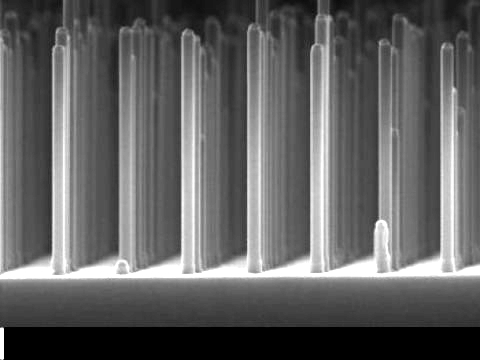Silver atoms align for nano-boost
 Researchers have taken a big step toward molecular-scale electronics.
Researchers have taken a big step toward molecular-scale electronics.
An international research team including QUT experts has developed a stable silver wire that is just one atom wide.
For the past two decades, researchers working on nano-devices have rarely been successful in creating long atomic wires in a coherently oriented array. Also previous attempts have been unstable in anything outside of a vacuum.
In a new project, QUT Professor Dmitri Golberg says researchers put nanoparticles of silver onto the outside of tiny nanorods that have channels inside.
“When we do this in a vacuum, or in some inert atmosphere as people usually do, nothing happens,” Professor Golberg said.
“But we did it in air. The atoms from silver particles diffused very fast and they diffused inside the channels.”
The expected result, Professor Golberg said, on an experiment like this would be that the silver would react with the oxygen in the air and form silver oxide.
“Instead, the atoms go inside the channels to accommodate themselves and make these small strings.
“It wasn’t intentional, it wasn’t planned to make wires,” he said.
Professor Golberg said the process was like water drops going through a sieve, and the result was that wires, as thin as just one atom, formed inside the channels in a self-organization process, with up to 200 strings in each channel.
The researchers then attached the nanowires to electrodes and ran a current through the wire, expecting it to behave like a metal in that current should increase as voltage was increased.
“But at some temperature, the material became an insulator. This is not common for silver and is called metal insulator transition,” Professor Golberg said.
“This is quite an interesting transition in physics.
“And this is a major point, because it means the silver wire could be used as a thermal switch. Depending on the temperature, you change the properties of the material by changing the temperature.”
In the work towards building nanodevices, the wire is considered quite long – although to put it in perspective the wire is as long as about one fiftieth of the width of a human hair.
“It’s still pretty small but for me it’s quite long. In the electron microscope, it’s very big.”
More details are available here.







 Print
Print